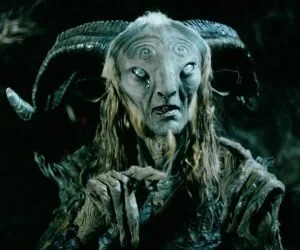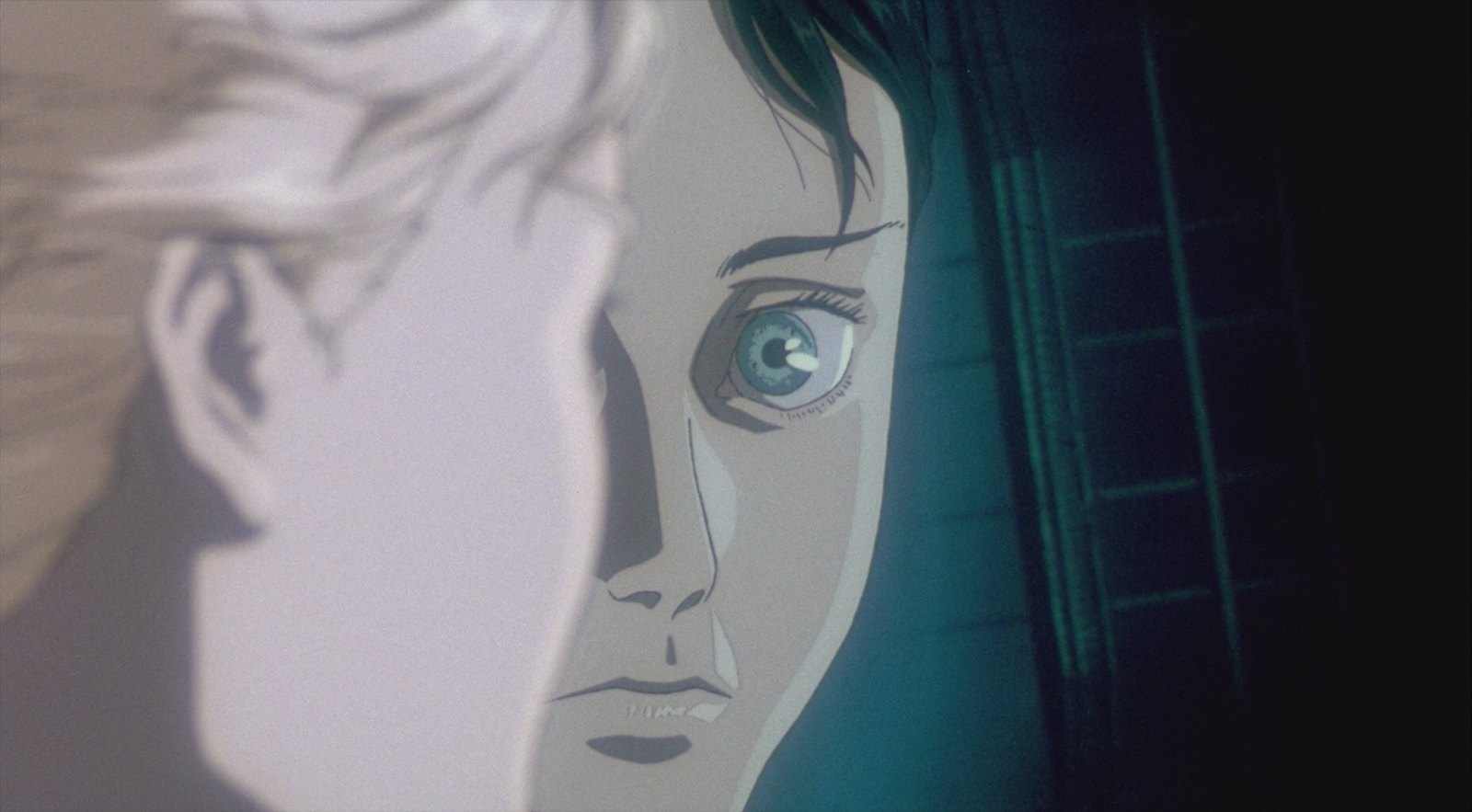Paperhouse: A Child’s Indelible Nightmare
BEWARE SPOILERS
We go into every post assuming you’ve already watched the film being discussed.
Paperhouse (1988) is available on Amazon Prime as of this writing (4/25/2021).
Bernard Rose’s 1988 film Paperhouse is a perfect illustration of dreamscape horror, tales that blur the lines between dream and reality. Like Catherine Storr’s 1958 novel Marianne Dreams, on which the film is based, and like the six-part TV adaptation Escape Into Night aired by the old British broadcaster ATV in 1972, Paperhouse focuses on a bedridden young girl named Marianne in the book and TV adaptation (played by Vikki Chambers) and renamed Anna in the film (played by Charlotte Burke). In all three versions, she finds herself inside her own drawing of a strange house when she dreams. The film is pretty much the definition of slow burn, and as it goes on, those dreams gradually char and crumble until they become a horrible nightmarescape.
The source novel sits comfortably in the genre of children’s dark fantasy, but it’s a malleable story, one that invites a lot of different readings. Bob Fischer over at The Haunted Generation, in reviewing the book, argues that
Storr’s achievement is in writing a story that leaves all interpretations open and valid, veering back and forth between the ennui of the humdrum everyday and the surreal, logic-twisting intensity of the nightmare with a dizzying aplomb that almost leaves us questioning our own sense of reality.
Escape Into Night, taking obvious inspiration from horror-adjacent episodes of classic Doctor Who, leverages eerie sound effects (sometimes with excessive reverb) to color its adaptation of the book. Escape Into Night also maintains the primary threat of the novel: creepy rocks shaped like small mountains, each with a single eye near its peak. They guard and slowly close in on the house with their unnerving stares, eventually encircling our two main characters and repeating, in robotic voices that come through the radio and sound like Doctor Who’s Daleks, “GET THEM! GET THEM!”
While a version of these stones make it into the film, and while Dalek-like voices do filter through the radio, the real threat comes from a confused but frightening version of Anna’s father (Ben Cross). In replacing the stony sentinels as the main threat with the dread-inducing image of Evil Dream Dad, the film offers a more personal and nightmarish vision of Storr’s dreamscape and a more insidious brand of horror than either Marianne Dreams or Escape Into Night.
Protector & Drunken Madman
The film follows eleven-year-old Anna, who suffers from several fainting spells brought on by glandular fever (also called mono--as in, the kissing disease). Storr’s novel is vague about the reason behind Marianne’s fainting, and in the TV serial she’s not sick at all--instead, she broke her leg in a horseback riding accident--but the results are the same: she’s bedridden and spends most of her waking hours drawing.
As in earlier versions, the house Anna draws in the opening of the film becomes the setting of dreams that come on during her more and more frequent fainting spells, and she quickly discovers that everything she draws with a particular pencil ends up inside the dreamscape. The unforeseen catch, she learns, is that the pencil is indelible. She can’t erase it.
Naturally, when a boy appears in the house after she sketches a frowning face gazing out the window, she thinks she’s created him. But Marc (played by the late Elliott Spiers, and spelled “Mark” in previous versions), has his own name, his own mind, and his own illness. In another slight departure from the book and film, the two bond quickly. Soon, Anna tries to provide Marc, suffering from muscular dystrophy brought on by polio, with books, toys, food, a bed--anything to make him happier.
Anna has a tough time of it right from the start, before she even meets Marc. After the classmate who sits in front of her taunts her, she retaliates by pulling her desk back, causing her classmate to fall to the floor. So her teacher sends her out into the hall, where Anna has her first fainting spell. And all on her birthday.
Anna is a rebellious kid too. She causes physical harm when she strikes back at her taunting classmate. She lashes out at her teacher. She lashes out at her mother (Glenne Headly). And the first time she faints, you question whether it’s even real. The fact that she herself claims to have faked it certainly doesn’t help.
Her behavior and obvious problems with authority seem to suggest trouble at home. Exactly what kind, we’re not sure, but it seems to be related to her dad’s drinking and how much he’s away from home.
In the novel, the relationship between Marianne and her dad, including how present he is in his family’s domestic life, is barely touched upon. In the film, though, Anna’s feelings toward him are a muddled mix of anger, joy, bitterness, hope, and resentment. She seems excited at the idea of seeing him and often utters things like, “I wish dad were here,” but when she stares at a developing photo of him in her mother’s darkroom, the camera lingers on his face rippling under the water in the red lighting, and Hans Zimmer’s score shifts into an ominous dirge.
Anna’s simultaneous adoration for and fear of her dad becomes such a fixture in the narrative that the film implies abuse. Nonetheless, Anna draws him into the dreamworld, having explained to Marc,
If my dad was here, he could carry you. And you could run away with us. Then you’d be safe. And you wouldn’t be afraid anymore.
But when she uses the photo as a guide for her drawing, her dad comes out looking like “a madman.” She looks at his angry, unerasable face--indelible pencil, remember. Then she tells her mother, “I think he looks drunk. I hate it when he’s drunk.” She eventually scribbles his face out.
So her dad goes from a protector who can keep Anna and Marc safe to a drunk and a madman. Anna sees him as someone who both helps and hurts, protects and destroys. As a result, we are left to wonder how much his alcoholism has shaped the family dynamics as we watch Anna struggle to navigate these opposing perceptions.
His appearance in her dreams is brutal and horrifying, but it’s also easier to make sense of than his absent counterpart in the real world. Evil Dream Dad terrorizes Anna and Marc and turns the dreamworld into a violent, threatening nightmarescape.
Evil Dream Dad
The Eyeball Rocks from the previous versions guarding the house like sentinels eventually form ranks and attack the kids. They’re weird and creepy, but as the primary source of conflict, they feel purely symbolic--representing Marc’s terminal illness closing in, perhaps; or the shrinking of Marianne’s world due to her own condition (in the novel) or broken leg (in the serial); or the general sense of dread that can underpin childhood anxiety; or the threat of encroaching death.
The point is, the Eyeball Rocks are an ambiguous metaphor. But Anna’s dad is an embodied threat. He’s an actual character--and not just any character. This is her father. Her flesh and blood. The man who, above all, is supposed to love and protect her. Who she sometimes believes does love and protect her, but who also scares the bejesus out of her.
And by the way, we’re not talking Star Wars or some other story about a far-away place and time with heroes and epic quests and blah blah blah. Much of Paperhouse is a mundane story about a preteen girl’s coming-of-age. Yeah, Darth Vader’s revelation that he’s Luke’s father is shocking on the first watch, but it’s not disturbing. You don’t find yourself asking questions about Luke being abused and traumatized as a child by his Sith Lord father. Those questions gnaw at Paperhouse, and they’re disturbing precisely because this is a mundane coming-of-age story.
Evil Dream Dad’s introduction serves as the first significant shift in the plot’s trajectory. Before this point, the film focuses on Anna’s discovering the world of her drawing, her and Marc’s worsening conditions, and her growing relationship with Marc as they bond in this fantastical setting. Once Evil Dream Dad shows up, the slow burn of the film has spread, covering much of the narrative, marking Anna, Marc, and the dreamscape with trauma and destruction.
Evil Dream Dad enters this world with fleshy scars scrawled like scribbles where his eyes should be. When Anna calls out to him, he calls back her name, raises a clawed hammer, and yells (in a seriously frightening moment cheapened with too much damned reverb) “I’M BLIND!” In that moment, the film transitions abruptly from dream to nightmare as it bursts into a brief but intense and raging bonfire--complete with obligatory and gratuitous 80s horror film explosions.
In other horror subgenres, and in Western film generally, you tend to see filmmakers trying to milk the climax for all it’s worth. In a typical slasher, this is the showdown with Freddy or Jason or Michael or Ghostface. In haunted house and other paranormal horror, this is when everyone finally figures out they should run the hell away from the Overlook Hotel or Amityville or the Native American burial grounds on which their house was built, but the hotel or ghosts or poltergeist or whatever won’t let them leave. The climax is pretty much, in Western film, the thing audiences are there to see.
At least that’s what film execs assume.
Paperhouse, though, offers only four terrifying minutes in which Anna and Marc are forced to confront Evil Dream Dad directly, and it all happens at the speed of a fever dream. During the world’s most ominous game of hide-and-seek, Anna and Marc cower in the closet as Marc coaches her through ripping Evil Dream Dad out of the real-world drawing from within the dream and burning the scrap of paper with his image in the candle next to the bed. This attempt to burn out the impending threat doesn’t work, and Anna’s “father,” having destroyed Marc’s bike in a fit of rage and thrown him against a wall to get to her, carries her from the house as the earth breaks apart beneath them and flames spread over the house and the nightmarescape.
He throws her down on a hill and pounds his fists against her chest repeatedly as Marc crawls through a window and drags himself to try to help her. Finally, Marc manages to catch up, and after he stabs Evil Dream Dad in the neck with the claw of the hammer, the madman falls into a fiery abyss. They’re safe for the moment, but the shock of the event remains as, after she awakes in the real world, Anna can hardly look at her dad, let alone say a kind word to him.
Given the implied abuse and alcoholism, that image of Evil Dream Dad bludgeoning her chest is as visceral and uncomfortable as any hoard of zombies tearing into silicon flesh in a geyser of red corn syrup. That context turns the assault into what feels like a terrible reenactment of some trauma he once inflicted on her.
As abruptly as it started, the climax is snuffed out, and the film nearly deflates the idea of abuse entirely as it takes viewers out of the dreamworld and back to reality. Evil Dream Dad’s sinister pounding, it turns out, was actually the “ambulance man” delivering “a heart massage” to resuscitate Anna.
The Unsaid & the Erased
Paperhouse comes with a certain amount of 80s cheese (the excessive reverb and obligatory pyrotechnics, for instance), but it’s still an excellent film. That climax is brief but seriously horrifying, Burke plays a convincing troubled kid, and the imagery throughout the movie is stark and childish in the best way possible. The trouble, though, is that the film hollows out its own beating heart.
After Marc rescues Anna from Evil Dream Dad, Paperhouse transitions to a long final act. In the scenes following the attack, the root of her terror and her relationship with her alcoholic, absentee father remain largely unexplored.
Anna and Marc, having defeated the monster, step out of the nightmare and back into a wonderful dreamscape. They kiss and do “rollovers” down the hill, and Anna draws her pencil into her dreams so that they can create whatever they need. Marc, who’s doing considerably better in the dreamworld but whose condition remains dire in reality, convinces Anna to give him the pencil so he can create a helicopter for them to fly away in.
But their imagined life together is a fantasy. Anna eventually winds up back in the real world, and her dreams stop. Not so for Marc.
When her parents take her on holiday to the coast, Anna once more enters the dreamscape. She stands at the edge of a cliff, reaching for the ladder hanging out of the helicopter Marc has created. He keeps yelling to her to back away from the edge of the cliff, telling her it’s too dangerous until, finally, the helicopter flies off into the distance without her.
When her parents pull her back from this brief, um, suicide attempt--or contemplation of suicide maybe? Who knows? It’s a weird scene--Anna happily reunites with them and promises everything’s going to be okay. It’s an unsatisfying attempt at a happy ending, one that throws out the implied abuse and trauma and glosses entirely over a child’s grief for her dead friend.
All that resentment and anger is simply forgotten. The unspoken promise is that her father won’t drink as much, and he’ll be around more, but this casual explanation makes it feel like the screenwriter or director or someone had a good idea for a version of this story that deals with abuse, grief, and trauma, but all that dramatic gold got cut out for the sake of a happy ending without a soul. There are insidious but telling pieces that point to a much darker tale, even if the film itself doesn’t want to admit it.
Then again, in leaving these ideas up for interpretation, the film strikes a similar chord as the novel. Bob Fischer’s article in The Haunted Generation claims that, in the book,
it’s the distinctly unsaid that makes the story so potent: if the features of the nightmare world are dependent entirely on the drawings in Marianne’s sketchbook, then what exists beyond that? When Mark and Marianne escape the house, and set up a John Wyndham-esque “cosy apocalypse” homestead, barricaded into a lighthouse of her creation, what lies across the ocean that they wistfully gaze out upon? It’s a book filled with questions…
The Horror of Reality
The story’s original conclusion, depicted in the novel and TV serial, sees both children, having overcome their illnesses, emerge from the nightmarescape and leave their dreams behind in favor of living in the real world again.
It’s a nice sentiment, and it’s clearly what Storr had in mind considering the book’s sequel, Marianne and Mark, offers a less fantastical story more grounded in the reality of adolescence. But in the movie, not everyone manages to overcome or cope with trauma, illness, and grief. Such tragedies, we’re told, often leave indelible scars.
Paperhouse offers a horror focused on human trauma and our ability or inability to cope. One of dread-inducing illnesses, lost childhood, and the unknowable but inevitable death that is always coming on. One that reminds us that children’s emotions, though often exaggerated, muddled, confusing, and all-consuming, often reflect the madness and tragedy of their own lives.
Anna and Marc, at first, believe their existence in the dreamworld means they were bad. Otherwise, why would they have gotten ill? Why would they find themselves stuck in this dream-turned-nightmarescape? They convince themselves that they must have done something to deserve their illnesses, because that’s the only way they can make sense of their personal traumas.
The truth is that sometimes awful things just happen. Sometimes kids are born with alcoholic and absentee fathers. Sometimes kids fall ill. Sometimes they die. Sometimes they overcome their hurdles, and sometimes they’re left to grow into broken adults. None of it’s fair. And much of it can’t be erased.
And this indelibility, this idea that a child can be permanently damaged, is what defines the most frightening part of the film.











